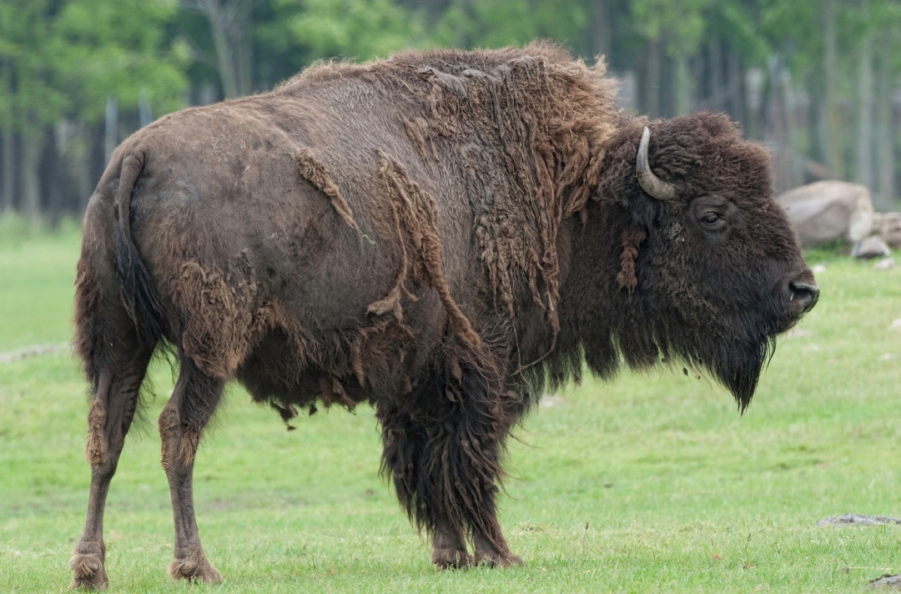In many previous posts, I’ve mentioned animals that molt. Birds do it, insects and arachnids do it, not to mention many marine animals. Heck, even people do it! But what exactly is molting (or as the British spell it, moulting)? What does it mean for an animal to molt? By now, I have received those questions in one form or another from several readers. So, it makes sense to address it in a Naturalist Answers post.
As you’ll see, molt can mean a lot of things for different animals. However, delving into some different examples can be a great way to learn more about the life history of wildlife.
Molting, more generally

Generally speaking, to molt means to shed some part of the body in a way that benefits the organism. Molting is thus the action by which an animal gets rid of some part of its body that is no longer needed. Sometimes this is because the animal has outgrown that body part, or that it is old or damaged.
For mammals like us, and popular pets like dogs, cats, rabbits, and rodents, molting means shedding. Or, to put it more practically, combing, brushing, and lots of vacuuming! If you have ever had to clean out a shower drain (ew!) or lint-brush a suit or dress, you have dealt with the results of molt. On an additionally unsettling level, dusting your home or office is similarly related to molt. This is because a significant component of household dust is made up by skin cells shed by human bodies. Ugh!
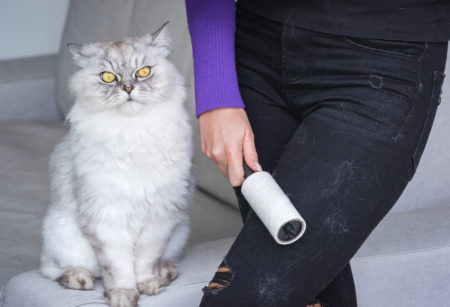
If animals didn’t molt, they might be weighed down by “baggage” of unused or unusable matter. Alternatively, we might have problems with parts of our bodies getting so old that they don’t help us. So we shed those parts to make room for better ones that are more helpful. The battle against split ends is ultimately a matter of molting!
Of course, molting is more than just hair and skin cells. Let’s explore some important types of molt in the animal kingdom.
Molting in invertebrates: Big changes for little critters
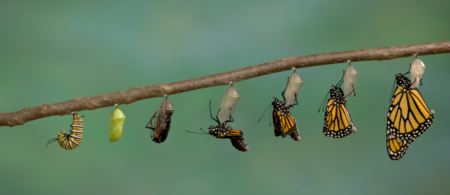
Invertebrates like arachnids (the group that includes spiders), insects, and crustaceans (like crabs and roly-polies) have hard external shells. Like a rigid suit of armor, these provide great protection but limit the growth of the animal’s soft tissues inside. This means that when invertebrates need to grow, or progress to a different stage of their life history, it’s time for a change.
Instead of shedding small parts like hairs or skin cells, growing invertebrates will typically molt their entire suit of armor or exoskeleton. Scientists call the shedding of this exoskeleton ecdysis. The biggest difference here is that ecdysis is a dramatic event. Rather than something that happens seemingly at random like losing an extra hair here and there, molting in invertebrates is a big deal.
Ecdysis typically involves an animal inflating a certain part of its body with fluid near a key weak point in its armor. The armor splits open at that point, and the animal literally crawls out of its own skin. This fresh, larger form has a soft and flexible exoskeleton that will harden as its exposed to air. This new skin often looks nicer and is in better condition than the old molt.
Growing up
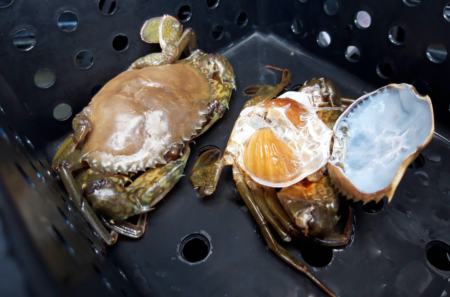
For many arthropods (invertebrates with armor and jointed appendages), molting is the only way to grow. Molt determines an animal’s progression through growth stages. In animals like lobsters it can be something they do repeatedly as they grow throughout adulthood. Meanwhile for some insects with incomplete metamorphosis, they grow through a set number of molts to reach adult size. The stages between those molt events are called instars.
Other invertebrates, however, use molting to make even bigger changes.
A change in lifestyle
Molting is also a way for invertebrates to completely rearrange their body plan. In other words, they can transform their whole body into a different form fit for a different lifestyle. Does that sound weird and extreme to you? Well, I can just about guarantee it’s something you’ve seen before!
Take butterflies and moths, for instance. These insects in the order Lepidoptera undergo complete metamorphosis, starting their lives as squishy caterpillars. After molting several times to get bigger, they eventually perform a special kind of molt. They pupate, shedding their outer skin and literally liquifying themselves inside a protective shell.

During a span of weeks or sometimes months during Winter, they rearrange their bodies into a new, adult form. Emerging from their pupa, they molt once more into their “final form” (Dragonball Z fans, eat your heart out). This form is known as the imago. In insects, the imago is typically the winged form.
A dangerous time
Arthropods are squishy and defenseless right after a molt and before their shells harden. Because of this, many of them will seek places to hide during their molt to avoid falling prey to opportunistic predators.
Molting in mammals: Winter coats, summer coats, and camouflage

Hair and fur are a very important part of mammalian life. While people don’t have much more than some hair here and there, most of our mammalian cousins count on fur to survive. It covers most of their bodies, and keeps them warm, dry, and often protected from predators.
While hairs like ours (yes, most furry mammals have hair, in addition to their finer, denser fur) are often shed at random, fur molts more synchronously. This is why some dog owners might run into issues with an explosion of fuzz from Fido every spring. The pupper is shedding loads of winter coat that helped keep them safe during colder months.
Lots of mammals in seasonal environments do this to adjust to their insulation needs throughout the year. When this process is going on, they can look pretty ridiculous, and discarded fur ends up all over the place. Since this shedding happens in Spring when many songbirds are breeding, the latter will take advantage and line their nests with shed fur.
The perfect disguise
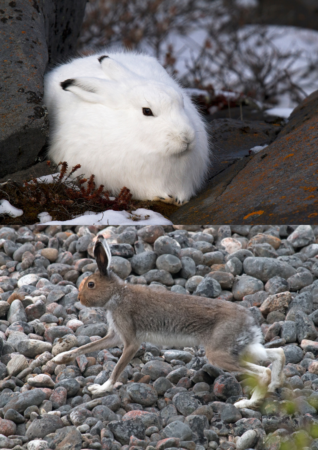
Molting also helps mammals keep up with changing times and improve their camouflage. Furry critters in snowy environments often take on a white fur coat in Winter. Then, when the snow melts away in Spring, they’ll take on a brown coat to better blend in. Stoats (Mustela erminea), Arctic foxes (Vulpes lagopus), and Arctic hares (Lepus arcticus) are all classic examples.
Closer to home for many readers, many deer do the same, taking on a warmer-colored coat during the summer, and a grayer one in winter.
Molting in reptiles: That spa-day mask-peel feeling

Reptiles, which typically don’t have hair, have a more antiquated way of molting. Unlike mammals whose skin flakes off little by little, reptiles typically shed all at once. When it comes time to molt, their older outer layer of skin will dry and begin to crack and fall off. For some reptiles like snakes, they will actively peel this layer from their bodies like a stocking.
Reptiles like lizards may pull off pieces with their mouths, or simply wait for the skin to fall off in larger patches as they go about their lives. Reptiles often look grayish and dully colored when they are about to molt. Their eyes may also take on a milky hue; the surface of their eyes will also be shed in this process!
Molting can be a vulnerable time for reptiles, too. In my experience, snakes and lizards tend to be much more ornery when they’re molting. Although you shouldn’t approach or handle wild lizards or snakes anyway, it’s worth cautiously dealing with any molting pets as well.
Another interesting feature of reptile molt is that they tend to “recycle” their old skins. That is, many reptiles eat their shed skins once they’ve completed molting. That way, they can conserve important nutrients that might otherwise be lost.
Molting in birds: Dressing for love, or keeping fresh
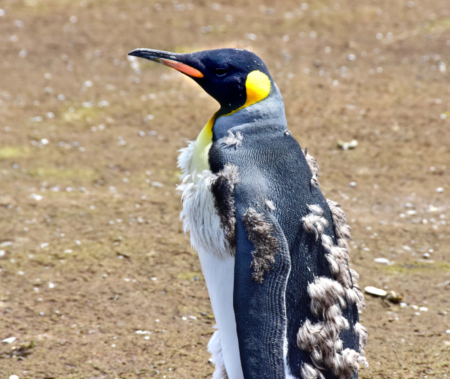
Birds are also fantastic molters. For many species, molting and replacing feathers is a year-round activity. This ensures that fresh, functioning feathers keep the bird warm and dry and provide important protection against ultraviolet radiation. Furthermore, intact feathers on the wings and tail are hugely important for flight!
Because of this, birds typically shed flight and tail feathers one or two at a time. This enables them to continue having a functional wing and airfoil even as they replace worn-out “parts”. Interestingly, many waterbirds molt their wing feathers all at once. You guessed it: that means they’re actually flightless for a couple of weeks each year!
During my research on Hawaiian gallinules (Gallinula galeata sandvicensis) in Hawai’i, I would frequently catch adult birds that had shed their wing-feathers. Their wings looked hilariously small, and were only good for helping them run across water to avoid predators.
Looking sharp
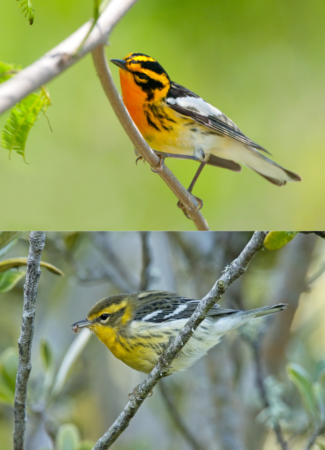
Of course, many birds also use molt as an opportunity to show off a little. This is particularly true of male birds in species that have distinct breeding seasons. For example, migratory birds typically look very different when migrating to their breeding grounds, versus leaving to their warmer wintering grounds. In those cases, molting is actually the transition between sharp, snazzy breeding plumage and the duller, lower-effort non-breeding plumage.
I always think of it in terms of prom dresses versus sweatpants. When its breeding season, birds are emphasizing image above all, but during the winter season they aren’t trying to look nice for anyone.
Thanks for reading!
Have you witnessed any cool incidences of animal molt in the wild? Share with us in the comments! If you like what you read here, please share and promote Gulo in Nature on social media! I’m always taking requests for new blog posts and questions from readers via the Contact page. Until next time!

